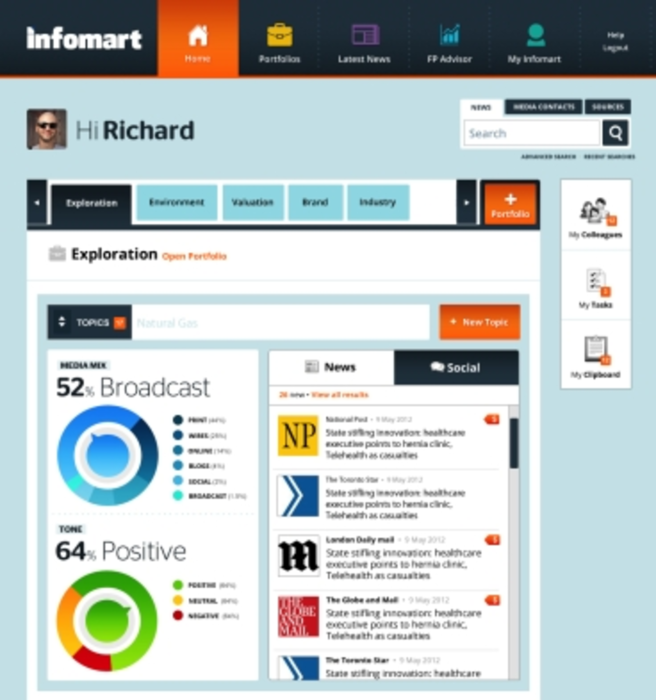When Infomart was founded back in far-off 1980s, Big Data wasn’t a thing. Now, it’s kind of the thing.
As a media consultancy, it was historically Infomart’s job to help its brand clients, which include among them government entities, corporations, and agencies across Canada, gather media mentions in print resources and some broadcast media. That’s all there really was to collect. But then the Internet happened. Social media happened.
In addition to empowering customers to share cat photos, the social Web empowers customers to share information about brands. If a brand wants to stay relevant, it has to know what its customers are saying about it. And these days, customers won’t shut up. They’ve got multiple screens—one of which happens to live in their pocket—and continual access to information and social channels through which they can immediately share opinions. What a fan—or foe—might be saying about your brand on Twitter could be just as, if not in some cases more, important than what a journalist is saying about you in Newsweek.
“Infomart started way before social was even on the radar,” says Mitchell Praw, the company’s general manager of marketing and professional services. “But our clients now are not just demanding the content itself, they’re also looking for the perspective surrounding that content and for specific insights that can be extracted through analysis of the content’s distribution and impact.”
The problem facing Infomart was twofold. First, it needed to do something to capture media mentions on social channels—media mentions that were coming thick, fast, and unstructured. Then it needed a way to present that information to its brand clients in a way that was accessible and didn’t make them want to scream for a life vest.
Infomart started using a cloud solution from Big Data service provider Infochimps to help its brand client start tracking social chatter and trends—because there’s no point in collecting data if you aren’t learning anything from it.
The Infochimps (no relation to the “mart”) platform-as-a-service uses a three-prong approach to handle data: it looks at the social data being generated around a campaign in real time; it lets users query the data with specific questions; and it analyzes historical data in Hadoop. Infomart integrated the platform into its own existing back end and wound up with a single digital solution, rather than a variety of different tools tacked together like Frankenstein’s monster—and just as ornery.
Jim Kaskade, CEO of Infochimps, notes that this can be a common problem for companies that are still determining how to manage Big Data without having to hire a full-time data scientist or patching together an analytics infrastructure they’d have to support internally. “It’s a pretty typical trend,” says the self-described data geek. “Companies have a volume of Big Data, some with structure and a lot with no structure at all, with many different sources and types.”
Now that Infomart can derive real-time social insights for its brand clients, Praw is a happy man.
“All of a sudden, we’re in a place where we can talk about what’s happening in the entire universe of how people see a brand and how they’re talking about brands across all platforms,” says Praw. “It’s all about deeper analysis.”








